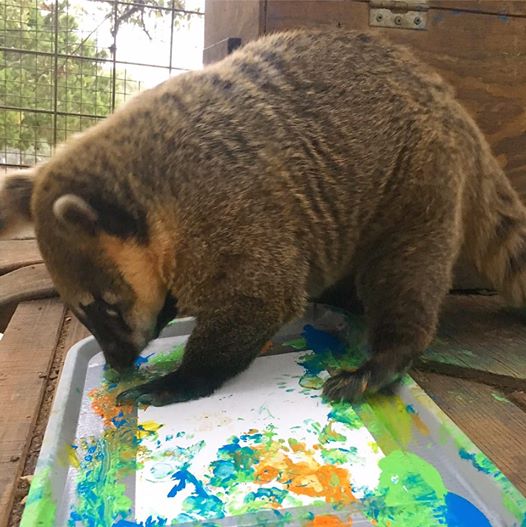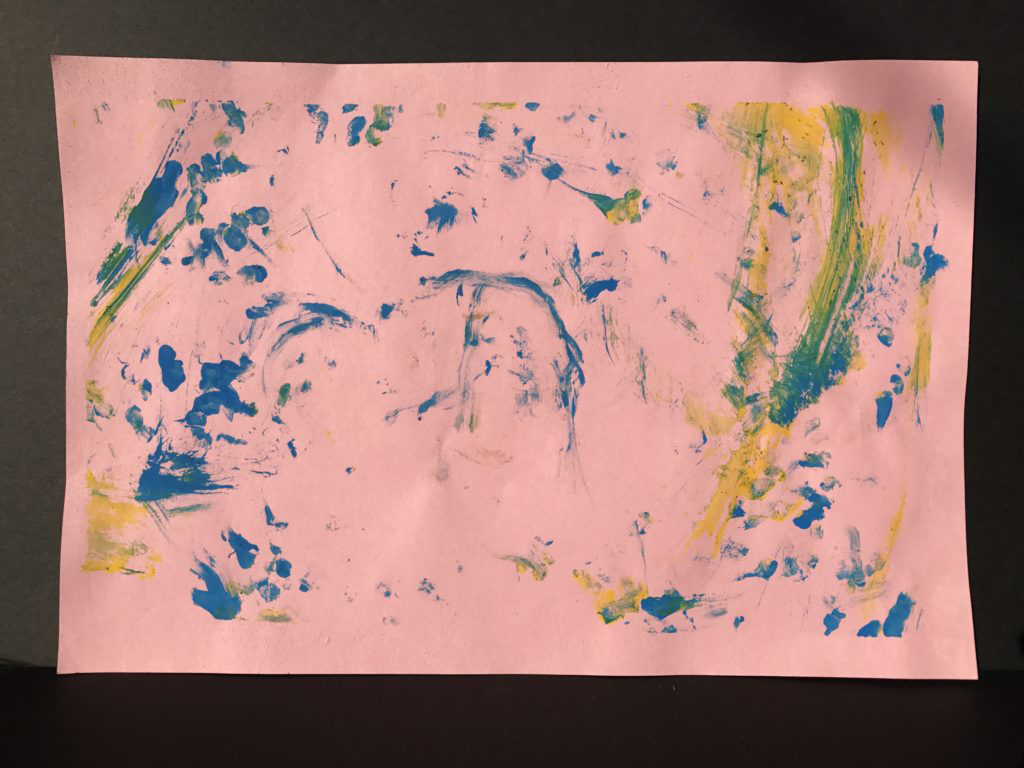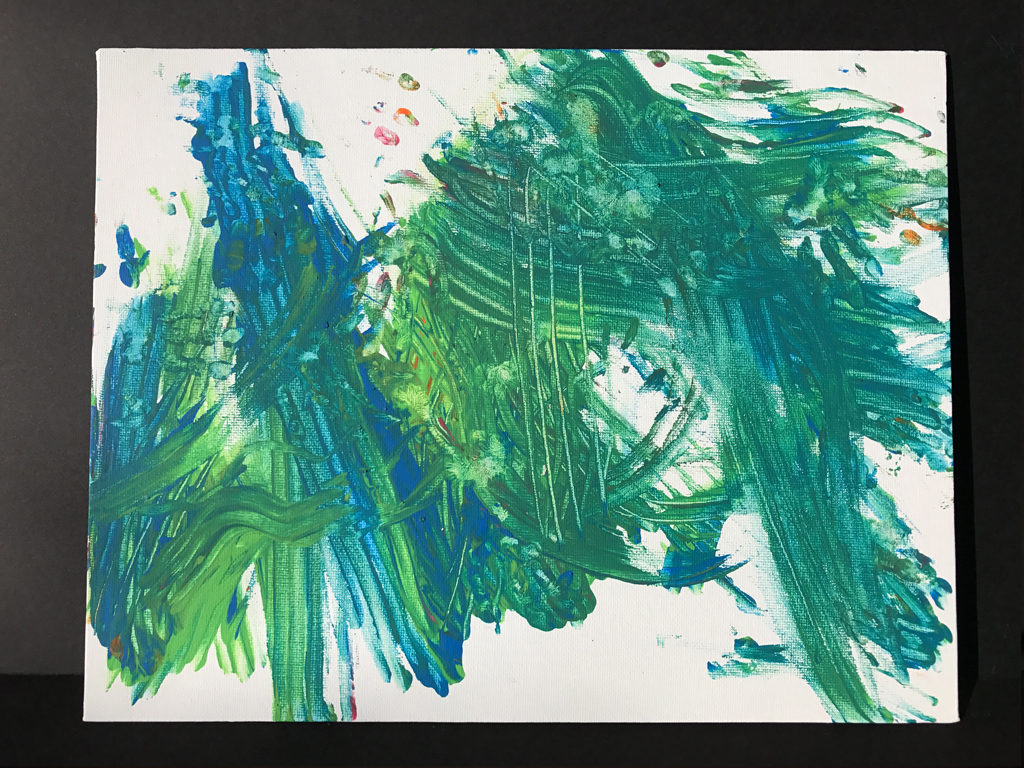Art World
Art Collectors Take Note: Primates Take Up Painting at the Austin Zoo
Add Rusty the Capuchin monkey to your list of hot emerging artists.

Add Rusty the Capuchin monkey to your list of hot emerging artists.

Sarah Cascone

Supporting emerging artists is always on trend, and you can often get a bargain out of the deal to boot. To that end, what could be more emerging than primate art from the Austin Zoo? That’s right, now you can buy watercolor paintings from Rusty the Capuchin monkey and his friends starting at a bargain $10 each.
Capuchin monkeys have a history in the arts, having traditionally worked with old-timey organ grinders. In Austin, however, they’ve become prolific painters, working on construction paper, cardboard, and even canvas, the latter for a premium of $25. Rusty is the most prolific, but Lu, Katie, Scary Spice, and Mulder have work for sale on the zoo website as well.
There are also pieces by an artistic brown lemur named Lele, and the zoo recently Tweeted a beyond adorable shot of Maddie the coatiumndi (a mammal from the raccoon family) taking part in some four-legged finger-painting.

A painting on construction paper by Lele the Brown Lemur. Courtesy of the Austin Zoo.
The Capuchins make their work using paint brushes, which were recently donated to the zoo. Previous attempts to engage the primates in art hadn’t caught on because “the animals didn’t like to get their little fingers and toes wet,” zoo director Patti Clark told artnet News in a phone conversation. The paintbrushes have made all the difference for the Capuchins.
“They can use their own tools; they just adore it,” she added. “All of the primates are very inquisitive… they think a lot, they reason their way through things, and they love puzzle feeders and toys that require them to figure things out, so painting seems like a natural extension of that.”
Art lovers eager to see Rusty at work can attend a daily primate keeper talk at 11:30 a.m. “The guests are so amazed that the primates are painting and then of course they want to buy,” said Clark. “The primates are engaged, they’re happy, and they’re doing something that stimulates their mind.”
The zoo keepers set out a variety of colors for the animals to choose from. “It is very interesting to watch and see what their preferences are,” said Clark. “Rusty in particular love the blues.”

A painting on canvas by Rusty the Capuchin. Courtesy of the Austin Zoo.
Still not convinced that the time is ripe to invest in monkey art? Rusty’s work has already attracted the attention of critics at the Downtown Austin Patch.
“The work evokes a jungle thicket, perhaps drawn from Rusty’s youthful memories or informed imaginings of the wet lowland forests of the Caribbean coast in Costa Rica or Panama of its relatives’ origins,” Tony Cantu enthused. “Rusty complements the art with an interplay of seemingly incongruous yet somehow complementary shadings and accents of different hue—a spot of pink here, a streak of yellow there, a streak of aqua blue here—as if to convey the mystery and unpredictable nature of the native forest.”
Rusty isn’t the only animal painter to make it big: there’s a racehorse named Major who has taken up the paintbrush in his retirement.
As an added incentive to buy, all the proceeds of the primate paintings’ sale go toward buying additional art supplies and funding other ways of enriching the lives of the zoo’s animals. As Clark put it, “our goal is to keep all of our animals stimulated and engaged and active while they’re in captivity.”